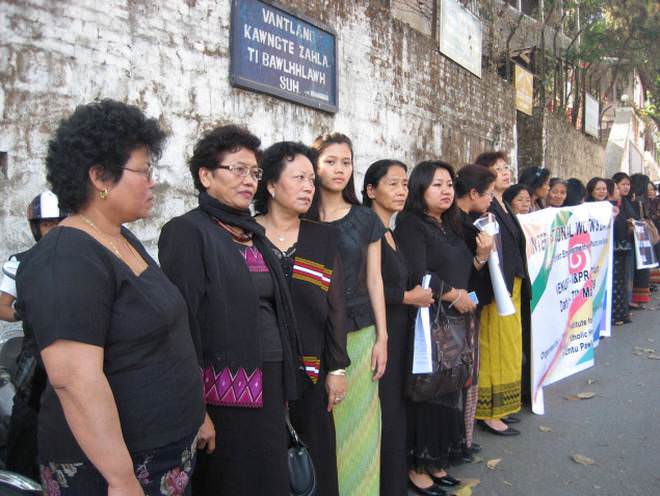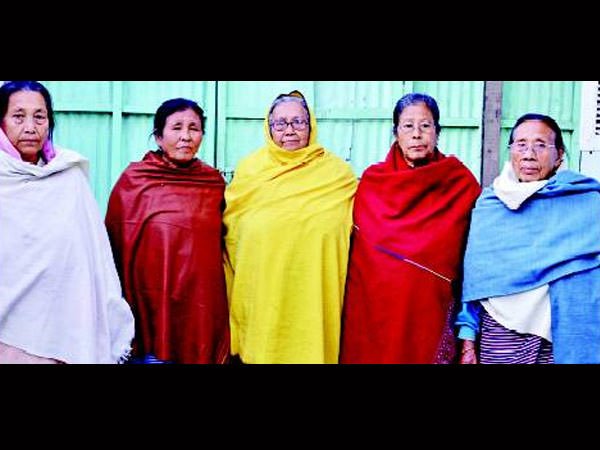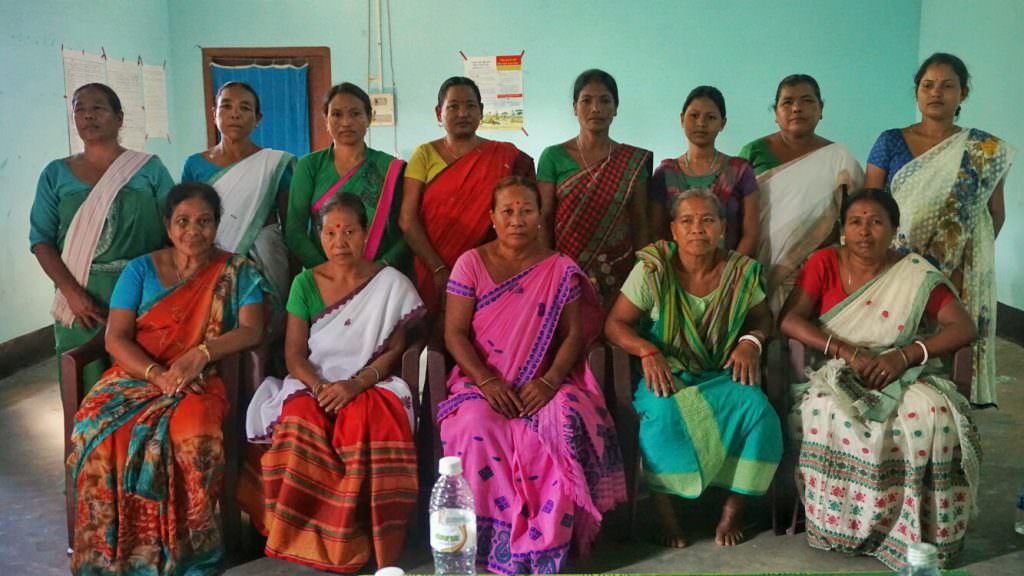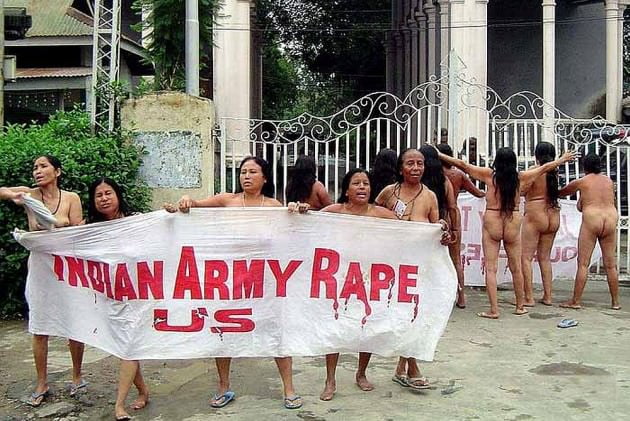North East India is a region which always remained aloof from rest of the country due to the marginalisation of the region from the ‘mainland’ India. When the whole country was celebrating women empowerment and women’s rights because of the various women’s movement, no one looked at the heroic women’s movement of the North East. North East India has also seen strong women’s movements raising their voices against injustice and bringing change in the society. From Assam, Mizoram, Manipur and Nagaland we have some of the strongest and must-know women’s movements, that challenged the patriarchy and raised voice against social injustices.
1. Nupi Lan (1904 and 1939-40), Manipur
Nupi Lan/Lal which means Women’s War (in Manipuri) first started in 1904 against the British order in Manipur. The heirs apparent of the former ruling family were not happy with the selection of Chura Chand Singh as the King by the British. So, they stirred up the first Nupi Lan.
Later the main agenda of Nupi Lan was to raise voice against British order of the Lalup (a form of forced labour where the male members of the society within the age-group of 17-60 would work freely for 10 days in the period of every 40 days) system to rebuild the then Police Agent’s Bungalow after it was destroyed by fire.
The women protested against this since the male members had to suffer, the women had to face various socio-economical obstacles. Almost 5,000 women participated in the movement and the movement lasted for a week. The British later suppressed the movement, but had to withdraw the order later.
Nupi Lan phase two took place between 1939-40. It was against the trade policy of Manipur set by the King and the British. The trade policy was about exporting rice from Manipur without looking at its limited production which is only sufficient for Manipur’s subsistence. This policy led to a famine and economical crunch in Manipur.
Women of Manipur collectivised themselves in the market and protested against it. When the authorities tried to suppress them by deploying police and armed men against the unarmed women, they fought vehemently against them and some of them lost their lives. The second phase lasted for several months but came to an end with the outbreak of World War II.

Nupi Lan – a non-violent uprising erupted in Manipur in 1904 and 1939 against British Colonial Rule.
2. Meira Paibi, Manipur
Meira Paibi was another women’s movement started in the late 1970s to control the social order and gendered violence occurring due to alcoholism and drug abuse. Meira Paibi (meaning the torch bearers – the meira symbolises the declaration of war) presently aims to protects human rights in their community and fight against the injustices of AFSPA (Armed Force Special Protection Act).
The Meira Paibis also participated in the protest against the Thangjam Manorama rape case in Manipur against the armed forces. The women of this movement are ordinary women who want to protect their community. These women do not resort to violence rather they burn torches till dawn. Today, Meira Paibi are more organised and have a long way to go.
 3. Irom Sharmila (Face of Anti-AFSPA Movement), Manipur
3. Irom Sharmila (Face of Anti-AFSPA Movement), Manipur
Irom Sharmila’s movement against AFSPA (Armed Force Special Protection Act) has been as long as almost 16 years now, though recently she broke her fast to fight elections against Okarm Ibibo in Manipur. She started her fast as early as November 2000 after she witnessed Assam Rifles personnel gunning down 10 people including teenage students under AFSPA. She was arrested several times under Section 309 for ‘attempt to suicide’ which she always denied and has been force-fed.
She told the Supreme Court that she has all the hopes to live a life but she wants the centre to withdraw AFSPA from her state. She was declared as Prisoner of Conscience by Amnesty International 2015. To give direction to her long movement, she decided to participate in the recent Manipur Elections, which she tragically lost, gaining only 90 votes after her 16-year-old fast.
 4. Mizo Women’s Movement under MHIP (Mizo Hmeichhe Insuihkhawm Pawl)
4. Mizo Women’s Movement under MHIP (Mizo Hmeichhe Insuihkhawm Pawl)
Recently, the Mizo Women’s Movement inched closer to their victory when the State Law Commission was in final process of reviewing The Mizo Marriage Bill 2013, The Mizo Inheritance Bill 2013 and The Mizo Divorce Bill 2013.
This was the result of long struggles of Mizo Hmeichhe Insuihkhawm Pawl (MHIP), which is a women’s organisation under Pi Sangkhumi (former president of MHIP). MHIP under the leadership had been demanding for changes in Mizo Marriage Laws, especially they wanted abolition of Mizo Bride Price in Mizo marriages. They said, “If age old customs like child-marriage, purdah, etc. can be illegal now, then why not the bride price in Mizoram can be declared illegal?” They also fight against violence against women, discrimination in workplaces, and campaign for 33% women’s reservation in the political system among others.

Mizo women fight for their rights | Photo Credit: de10periscope
5. Naga Mothers’ Association (NMA), Nagaland
Naga Mothers’ Association is presently a women’s peace-making organisation. It was established in 1984. The most evident movement taken up by NMA was ‘Shed No More Blood’ (which is also their theme) movement which was against gendered violence and human rights violation by campaigns prohibiting drug abuse and alcoholism.
They also train to maintain peace and prohibit violence by nurturing and sustaining ceasefire between Nagaland underground groups and government. Along with Meira Paibi, they demand the government to withdraw AFSPA and maintain peace and tranquility in their state and stop armed forces to kill innocent villagers in the name of terrorists.

The Naga Mothers’ Association
6. Asom Mahila Samiti, Assam
The women’s movement in Assam is as old as the freedom struggle in this zone. The Asom Mahila Samiti (later Asom Pradeshik Mahila Samiti) was established in 1926 under Chandraprabha Saikiani. Under this organisation there were various movements against violence against women, women’s low literacy, gender discrimination wages and workplaces and encouraging women’s self-esteem in the society, in general.
They also conduct peace campaigns and have raised their voice against women’s invisibility in the society and challenged the patriarchy inherent in it. Later this organisation broke into various smaller groups with Tezpur District Mahila Samiti as the major constituent of it.

The Assam Mahila Samata Samiti has done exemplary work in creating awareness on witch hunting.
Like the rest of the world, North East India is also in constant recurrence of women’s movements. Here women’s movements are not only redefining gender stereotypes through their interventions but also tried transforming definitions of democracy, nationalism and peace. They always believed that military regulations are not solutions to peace – rather it is about dialogue and political negotiations.
With all these heroic movements, North East also makes its space in the arena of women’s movements, which must be acknowledged.
Disclaimer: This list is by no means comprehensive. Please suggest us other women’s movements in the North East that we might have missed in this article in the comments section below.
About the author(s)
Presently pursuing MA in Women's Studies and trying to explore the field of 'Gender and Media'. Strongly interested in writing since childhood.

 3. Irom Sharmila (Face of Anti-AFSPA Movement), Manipur
3. Irom Sharmila (Face of Anti-AFSPA Movement), Manipur 4. Mizo Women’s Movement under MHIP (Mizo Hmeichhe Insuihkhawm Pawl)
4. Mizo Women’s Movement under MHIP (Mizo Hmeichhe Insuihkhawm Pawl)


